Nikhil Garg
Urban Incident Prediction with Graph Neural Networks: Integrating Government Ratings and Crowdsourced Reports
Jun 10, 2025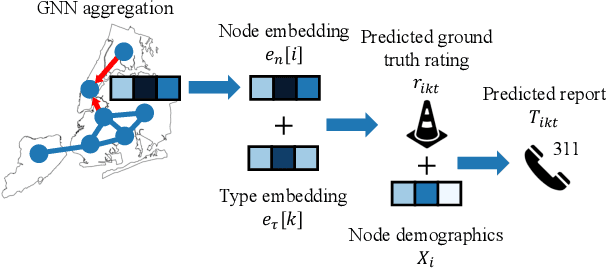
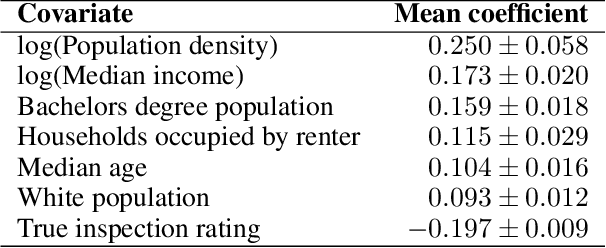
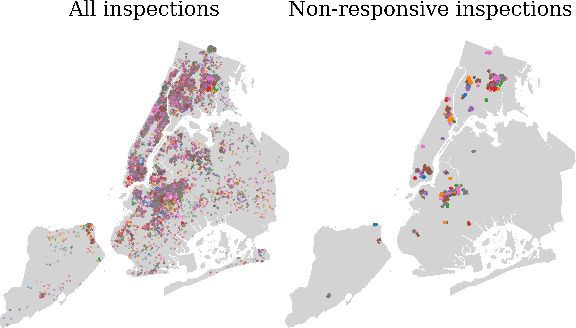

Abstract:Graph neural networks (GNNs) are widely used in urban spatiotemporal forecasting, such as predicting infrastructure problems. In this setting, government officials wish to know in which neighborhoods incidents like potholes or rodent issues occur. The true state of incidents (e.g., street conditions) for each neighborhood is observed via government inspection ratings. However, these ratings are only conducted for a sparse set of neighborhoods and incident types. We also observe the state of incidents via crowdsourced reports, which are more densely observed but may be biased due to heterogeneous reporting behavior. First, for such settings, we propose a multiview, multioutput GNN-based model that uses both unbiased rating data and biased reporting data to predict the true latent state of incidents. Second, we investigate a case study of New York City urban incidents and collect, standardize, and make publicly available a dataset of 9,615,863 crowdsourced reports and 1,041,415 government inspection ratings over 3 years and across 139 types of incidents. Finally, we show on both real and semi-synthetic data that our model can better predict the latent state compared to models that use only reporting data or models that use only rating data, especially when rating data is sparse and reports are predictive of ratings. We also quantify demographic biases in crowdsourced reporting, e.g., higher-income neighborhoods report problems at higher rates. Our analysis showcases a widely applicable approach for latent state prediction using heterogeneous, sparse, and biased data.
Correlated Errors in Large Language Models
Jun 09, 2025Abstract:Diversity in training data, architecture, and providers is assumed to mitigate homogeneity in LLMs. However, we lack empirical evidence on whether different LLMs differ meaningfully. We conduct a large-scale empirical evaluation on over 350 LLMs overall, using two popular leaderboards and a resume-screening task. We find substantial correlation in model errors -- on one leaderboard dataset, models agree 60% of the time when both models err. We identify factors driving model correlation, including shared architectures and providers. Crucially, however, larger and more accurate models have highly correlated errors, even with distinct architectures and providers. Finally, we show the effects of correlation in two downstream tasks: LLM-as-judge evaluation and hiring -- the latter reflecting theoretical predictions regarding algorithmic monoculture.
Bayesian Modeling of Zero-Shot Classifications for Urban Flood Detection
Mar 18, 2025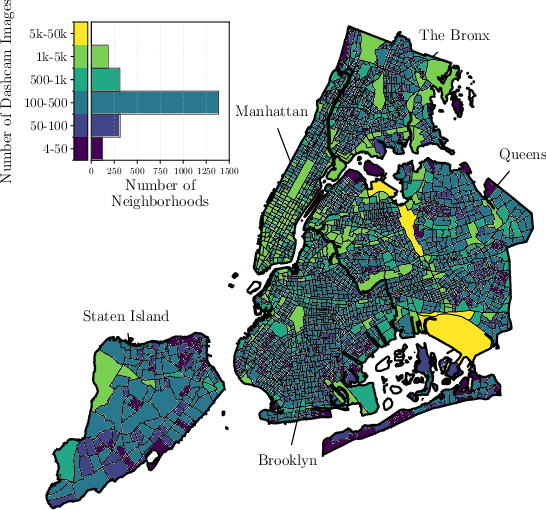
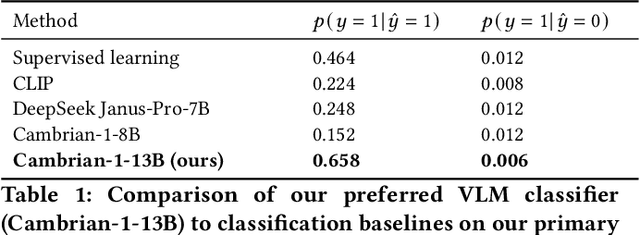

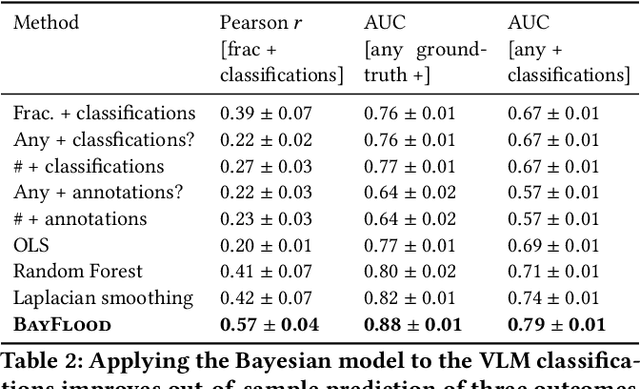
Abstract:Street scene datasets, collected from Street View or dashboard cameras, offer a promising means of detecting urban objects and incidents like street flooding. However, a major challenge in using these datasets is their lack of reliable labels: there are myriad types of incidents, many types occur rarely, and ground-truth measures of where incidents occur are lacking. Here, we propose BayFlood, a two-stage approach which circumvents this difficulty. First, we perform zero-shot classification of where incidents occur using a pretrained vision-language model (VLM). Second, we fit a spatial Bayesian model on the VLM classifications. The zero-shot approach avoids the need to annotate large training sets, and the Bayesian model provides frequent desiderata in urban settings - principled measures of uncertainty, smoothing across locations, and incorporation of external data like stormwater accumulation zones. We comprehensively validate this two-stage approach, showing that VLMs provide strong zero-shot signal for floods across multiple cities and time periods, the Bayesian model improves out-of-sample prediction relative to baseline methods, and our inferred flood risk correlates with known external predictors of risk. Having validated our approach, we show it can be used to improve urban flood detection: our analysis reveals 113,738 people who are at high risk of flooding overlooked by current methods, identifies demographic biases in existing methods, and suggests locations for new flood sensors. More broadly, our results showcase how Bayesian modeling of zero-shot LM annotations represents a promising paradigm because it avoids the need to collect large labeled datasets and leverages the power of foundation models while providing the expressiveness and uncertainty quantification of Bayesian models.
Sparse Autoencoders for Hypothesis Generation
Feb 05, 2025



Abstract:We describe HypotheSAEs, a general method to hypothesize interpretable relationships between text data (e.g., headlines) and a target variable (e.g., clicks). HypotheSAEs has three steps: (1) train a sparse autoencoder on text embeddings to produce interpretable features describing the data distribution, (2) select features that predict the target variable, and (3) generate a natural language interpretation of each feature (e.g., "mentions being surprised or shocked") using an LLM. Each interpretation serves as a hypothesis about what predicts the target variable. Compared to baselines, our method better identifies reference hypotheses on synthetic datasets (at least +0.06 in F1) and produces more predictive hypotheses on real datasets (~twice as many significant findings), despite requiring 1-2 orders of magnitude less compute than recent LLM-based methods. HypotheSAEs also produces novel discoveries on two well-studied tasks: explaining partisan differences in Congressional speeches and identifying drivers of engagement with online headlines.
Learning Disease Progression Models That Capture Health Disparities
Dec 20, 2024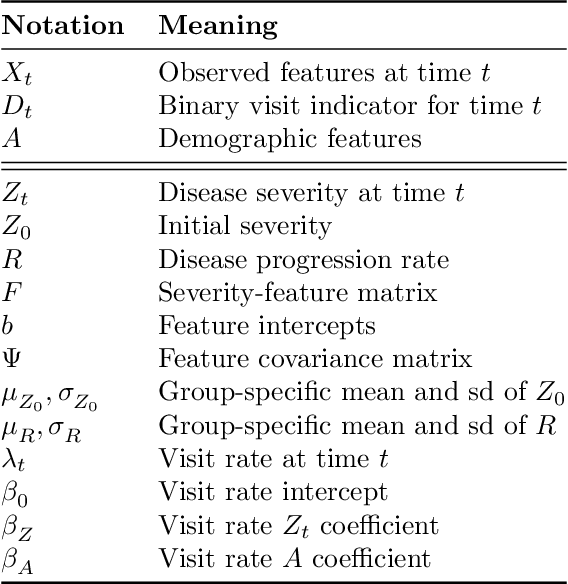
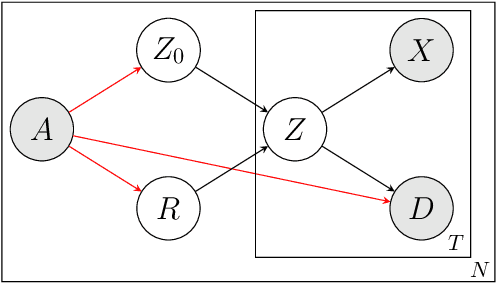
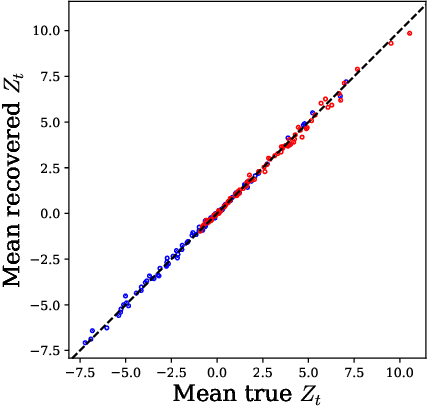

Abstract:Disease progression models are widely used to inform the diagnosis and treatment of many progressive diseases. However, a significant limitation of existing models is that they do not account for health disparities that can bias the observed data. To address this, we develop an interpretable Bayesian disease progression model that captures three key health disparities: certain patient populations may (1) start receiving care only when their disease is more severe, (2) experience faster disease progression even while receiving care, or (3) receive follow-up care less frequently conditional on disease severity. We show theoretically and empirically that failing to account for disparities produces biased estimates of severity (underestimating severity for disadvantaged groups, for example). On a dataset of heart failure patients, we show that our model can identify groups that face each type of health disparity, and that accounting for these disparities meaningfully shifts which patients are considered high-risk.
User-item fairness tradeoffs in recommendations
Dec 05, 2024



Abstract:In the basic recommendation paradigm, the most (predicted) relevant item is recommended to each user. This may result in some items receiving lower exposure than they "should"; to counter this, several algorithmic approaches have been developed to ensure item fairness. These approaches necessarily degrade recommendations for some users to improve outcomes for items, leading to user fairness concerns. In turn, a recent line of work has focused on developing algorithms for multi-sided fairness, to jointly optimize user fairness, item fairness, and overall recommendation quality. This induces the question: what is the tradeoff between these objectives, and what are the characteristics of (multi-objective) optimal solutions? Theoretically, we develop a model of recommendations with user and item fairness objectives and characterize the solutions of fairness-constrained optimization. We identify two phenomena: (a) when user preferences are diverse, there is "free" item and user fairness; and (b) users whose preferences are misestimated can be especially disadvantaged by item fairness constraints. Empirically, we prototype a recommendation system for preprints on arXiv and implement our framework, measuring the phenomena in practice and showing how these phenomena inform the design of markets with recommendation systems-intermediated matching.
A No Free Lunch Theorem for Human-AI Collaboration
Nov 21, 2024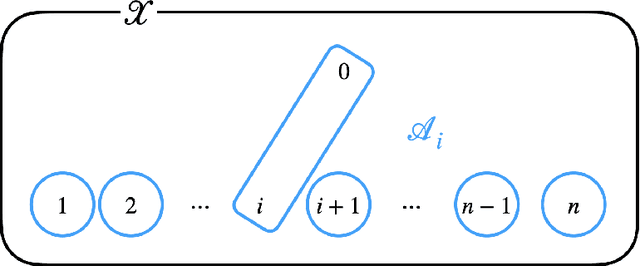
Abstract:The gold standard in human-AI collaboration is complementarity -- when combined performance exceeds both the human and algorithm alone. We investigate this challenge in binary classification settings where the goal is to maximize 0-1 accuracy. Given two or more agents who can make calibrated probabilistic predictions, we show a "No Free Lunch"-style result. Any deterministic collaboration strategy (a function mapping calibrated probabilities into binary classifications) that does not essentially always defer to the same agent will sometimes perform worse than the least accurate agent. In other words, complementarity cannot be achieved "for free." The result does suggest one model of collaboration with guarantees, where one agent identifies "obvious" errors of the other agent. We also use the result to understand the necessary conditions enabling the success of other collaboration techniques, providing guidance to human-AI collaboration.
Addressing Discretization-Induced Bias in Demographic Prediction
May 27, 2024



Abstract:Racial and other demographic imputation is necessary for many applications, especially in auditing disparities and outreach targeting in political campaigns. The canonical approach is to construct continuous predictions -- e.g., based on name and geography -- and then to $\textit{discretize}$ the predictions by selecting the most likely class (argmax). We study how this practice produces $\textit{discretization bias}$. In particular, we show that argmax labeling, as used by a prominent commercial voter file vendor to impute race/ethnicity, results in a substantial under-count of African-American voters, e.g., by 28.2% points in North Carolina. This bias can have substantial implications in downstream tasks that use such labels. We then introduce a $\textit{joint optimization}$ approach -- and a tractable $\textit{data-driven thresholding}$ heuristic -- that can eliminate this bias, with negligible individual-level accuracy loss. Finally, we theoretically analyze discretization bias, show that calibrated continuous models are insufficient to eliminate it, and that an approach such as ours is necessary. Broadly, we warn researchers and practitioners against discretizing continuous demographic predictions without considering downstream consequences.
A Bayesian Spatial Model to Correct Under-Reporting in Urban Crowdsourcing
Dec 18, 2023



Abstract:Decision-makers often observe the occurrence of events through a reporting process. City governments, for example, rely on resident reports to find and then resolve urban infrastructural problems such as fallen street trees, flooded basements, or rat infestations. Without additional assumptions, there is no way to distinguish events that occur but are not reported from events that truly did not occur--a fundamental problem in settings with positive-unlabeled data. Because disparities in reporting rates correlate with resident demographics, addressing incidents only on the basis of reports leads to systematic neglect in neighborhoods that are less likely to report events. We show how to overcome this challenge by leveraging the fact that events are spatially correlated. Our framework uses a Bayesian spatial latent variable model to infer event occurrence probabilities and applies it to storm-induced flooding reports in New York City, further pooling results across multiple storms. We show that a model accounting for under-reporting and spatial correlation predicts future reports more accurately than other models, and further induces a more equitable set of inspections: its allocations better reflect the population and provide equitable service to non-white, less traditionally educated, and lower-income residents. This finding reflects heterogeneous reporting behavior learned by the model: reporting rates are higher in Census tracts with higher populations, proportions of white residents, and proportions of owner-occupied households. Our work lays the groundwork for more equitable proactive government services, even with disparate reporting behavior.
Domain constraints improve risk prediction when outcome data is missing
Dec 06, 2023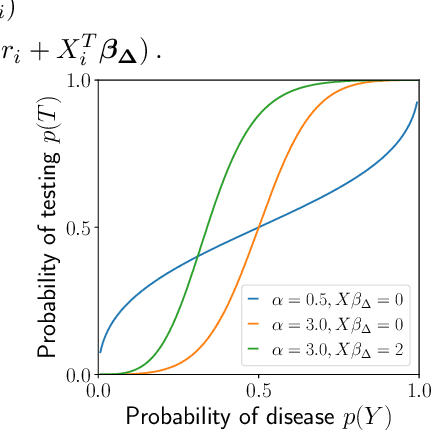

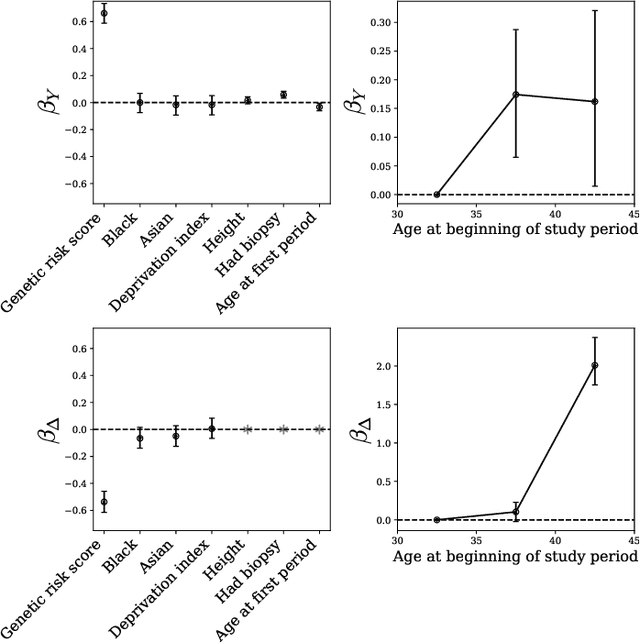
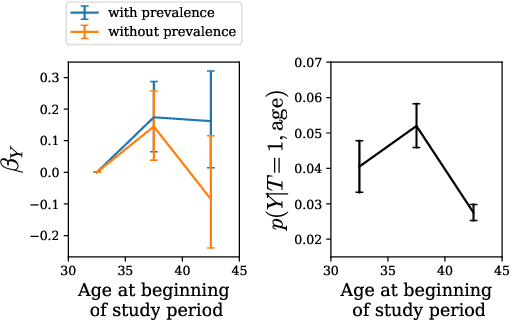
Abstract:Machine learning models are often trained to predict the outcome resulting from a human decision. For example, if a doctor decides to test a patient for disease, will the patient test positive? A challenge is that the human decision censors the outcome data: we only observe test outcomes for patients doctors historically tested. Untested patients, for whom outcomes are unobserved, may differ from tested patients along observed and unobserved dimensions. We propose a Bayesian model class which captures this setting. The purpose of the model is to accurately estimate risk for both tested and untested patients. Estimating this model is challenging due to the wide range of possibilities for untested patients. To address this, we propose two domain constraints which are plausible in health settings: a prevalence constraint, where the overall disease prevalence is known, and an expertise constraint, where the human decision-maker deviates from purely risk-based decision-making only along a constrained feature set. We show theoretically and on synthetic data that domain constraints improve parameter inference. We apply our model to a case study of cancer risk prediction, showing that the model's inferred risk predicts cancer diagnoses, its inferred testing policy captures known public health policies, and it can identify suboptimalities in test allocation. Though our case study is in healthcare, our analysis reveals a general class of domain constraints which can improve model estimation in many settings.
 Add to Chrome
Add to Chrome Add to Firefox
Add to Firefox Add to Edge
Add to Edge